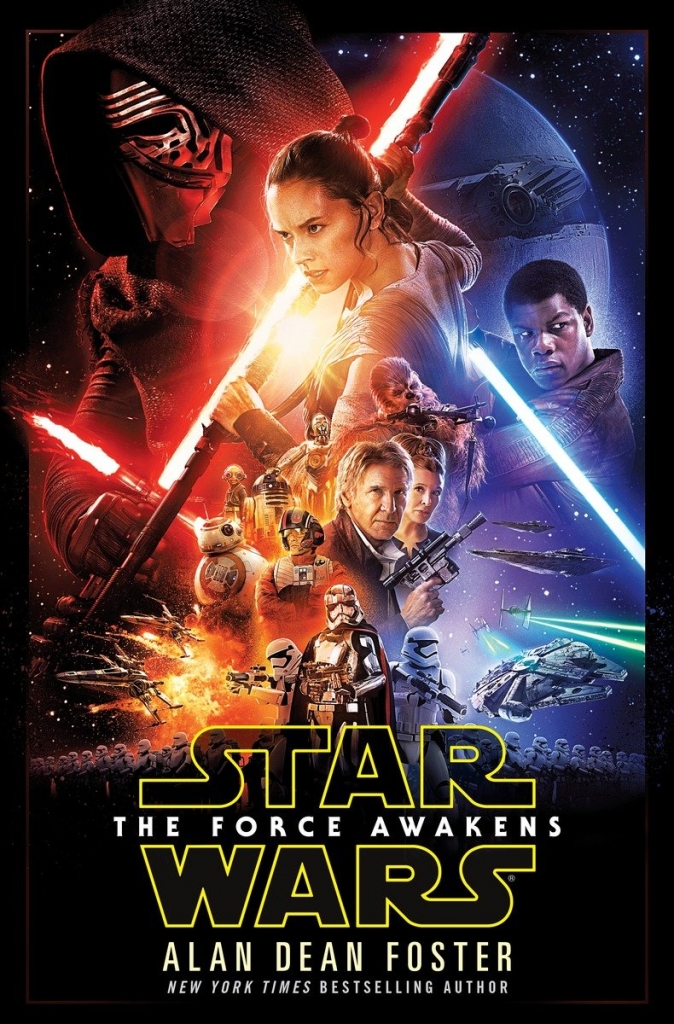“I can’t believe they made a film based on one of your books!”
I’ve heard this many times over the last few years, and except for the case of the Christmas story I did with Jimmy Wayne called Paper Angels, I have to correct them.
“Actually, I wrote the book based off the movie. It’s called a novelization.”
I will then explain a bit of the process. Many people have never heard of this term, nor have they ever read a novelization. But I actually first read one years ago based on the original Star Wars movie released on May 25, 1977. The author of the novelization was George Lucas, but it was actually ghostwritten by respected and bestselling fantasy/sci-fi writer Alan Dean Foster.
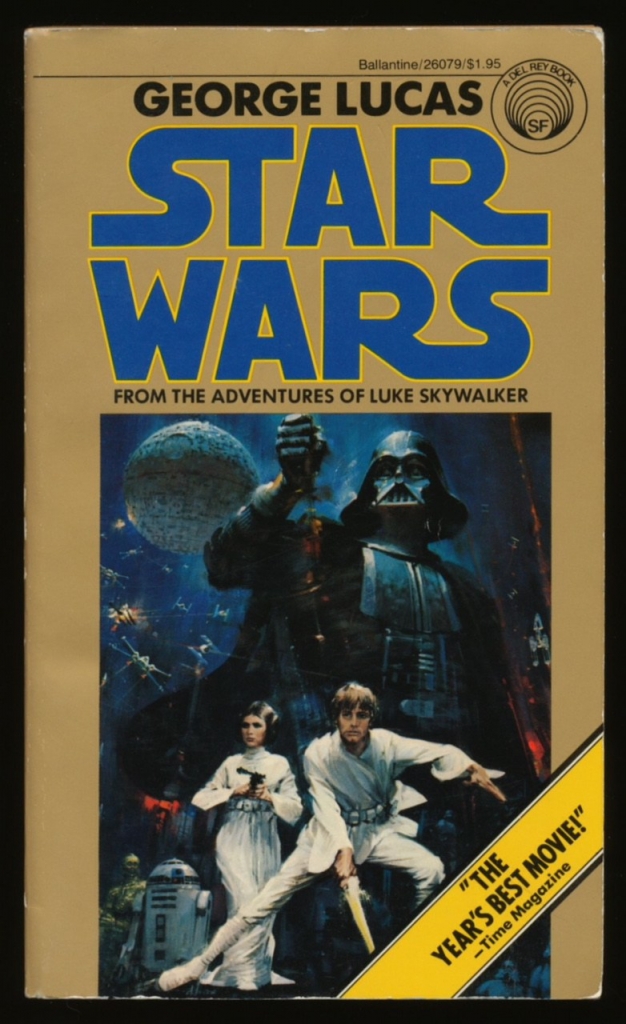 With God’s Not Dead 2 arriving in theaters tomorrow on April 1, I thought it would be a good time to talk about the process of taking a screenplay and turning it into a novel. I had the privilege to do this with God’s Not Dead 2, and it was really an enjoyable process. So here are some of my thoughts on this genre of books and my own experiences with them.
With God’s Not Dead 2 arriving in theaters tomorrow on April 1, I thought it would be a good time to talk about the process of taking a screenplay and turning it into a novel. I had the privilege to do this with God’s Not Dead 2, and it was really an enjoyable process. So here are some of my thoughts on this genre of books and my own experiences with them.
WHY NOVELIZATIONS?
There’s a fabulous article here on the history and current status of novelizations that came out in Vanity Fair back in 2014. They’ve been doing them for years, especially for the big blockbuster movies. One of the most notable novelizations is the one featured here for Alien, once again done by Alan Dean Foster.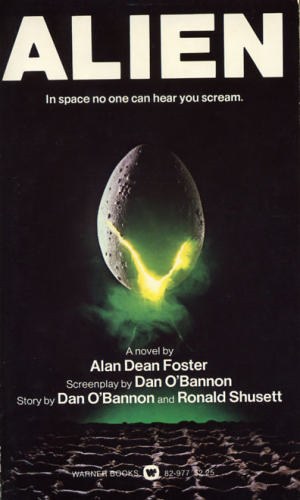 I’ve told a lot of people that novelizations are in some ways glorified t-shirts to help promote the film. That might sound crass and paint the novel itself as something you can easily toss away, but I don’t mean it to come across like that. The truth is most novelizations are primarily done after the film is in production (sometimes after it’s been finished) and they can be an afterthought. There’s usually a very small window of time that writers will have to get the project finished. Like a movie poster or soundtrack, a novelization serves to point people back to the film.
I’ve told a lot of people that novelizations are in some ways glorified t-shirts to help promote the film. That might sound crass and paint the novel itself as something you can easily toss away, but I don’t mean it to come across like that. The truth is most novelizations are primarily done after the film is in production (sometimes after it’s been finished) and they can be an afterthought. There’s usually a very small window of time that writers will have to get the project finished. Like a movie poster or soundtrack, a novelization serves to point people back to the film.
In the last decade, it seems there are two types of film genres that have produced a lot of novelizations: the big action blockbusters and faith-based films. Look at all the comic-book movies, for instance. You’ll usually find a novel that’s called a “Movie Tie-In Edition.” The Dark Knight Rises: The Official Novelization is an example of this. One of my all-time favorite movies—Interstellar—had a novelization, a book I dearly wish I could have written myself. As already noted, I first read a Star Wars novelization years ago. With the arrival of The Force Awakens last year, a whole new slew of Star Wars-related books were published. In fact, all together there were twenty different titles! Check them out here.
The other category of films where novelizations have been showing up is the faith-based genre. I first noticed these when a fellow talented writer Eric Wilson wrote the novelization for the popular Christian film Fireproof back in 2008. I had gotten to know Eric a little because he was a guy like myself—a novelist who strived to produce darker stories, ones that didn’t necessarily fit into the world of Christian fiction. I admired Eric working on these novelizations even though they didn’t fit his “brand.” As someone who strived to not have a brand, I started becoming more interested in possibly doing novelizations myself one day.
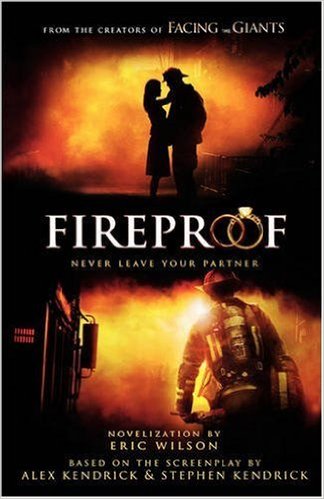 MY FIRST SECOND NOVELIZATION (BUT FIRST OFFICIAL ONE)
MY FIRST SECOND NOVELIZATION (BUT FIRST OFFICIAL ONE)
Before working on my first official novelization, I had a chance to ghostwrite one. It was for a big-name author. This allowed me to gain some experience at the process. That particular project was completely bewildering and frustrating, mostly because of the lack of any communication I received. But that was my training for the next novelization to come.
On December 13, 2011, I would receive my first call about working on a novelization. It would come from Don Pape, who at the time was a VP at David C. Cook Publishers. I had been working with them for a few years on my teen series The Solitary Tales. Don was a friend and a fan of mine and had been since he worked at Waterbrook Press and published my omnibus of love stories Three Roads Home.
I had emailed Don about a possible project and he was answering me on that. At the end of his email, he said this:
“I also can’t tell you more but we may be acquiring a project where we need a writer and today we discussed your name several times over. It would be a novelization project of a film screenplay.”
Of course, I wanted to know more. Many times, even though I ask to hear more, publishers and agents remain tight-lipped. But Don being Don called me back to talk off the record. He told me it was a story about a baseball player who has a drinking problem. He’s forced to go back home and enter a recovery program and its there while reconnecting with his family and his long-lost first love that he gets his life back in order.
I told Don I didn’t know a lot about baseball, but I did know about messed-up and broken characters since I loved writing about them.
“You were the first person we thought of when it came to writing about someone who is messed up,” Don told me, half-joking.
The guy primarily working on this project at David C. Cook was Alex Field, the Deputy Publisher (who is now the VP and publisher at Waterbrook Multnomah Publishers). He pitched me to the film’s producers and then set up a time for me to visit them. I flew out to California to meet Carol Mathews and Micah Barnard and talk about their movie called Home Run.
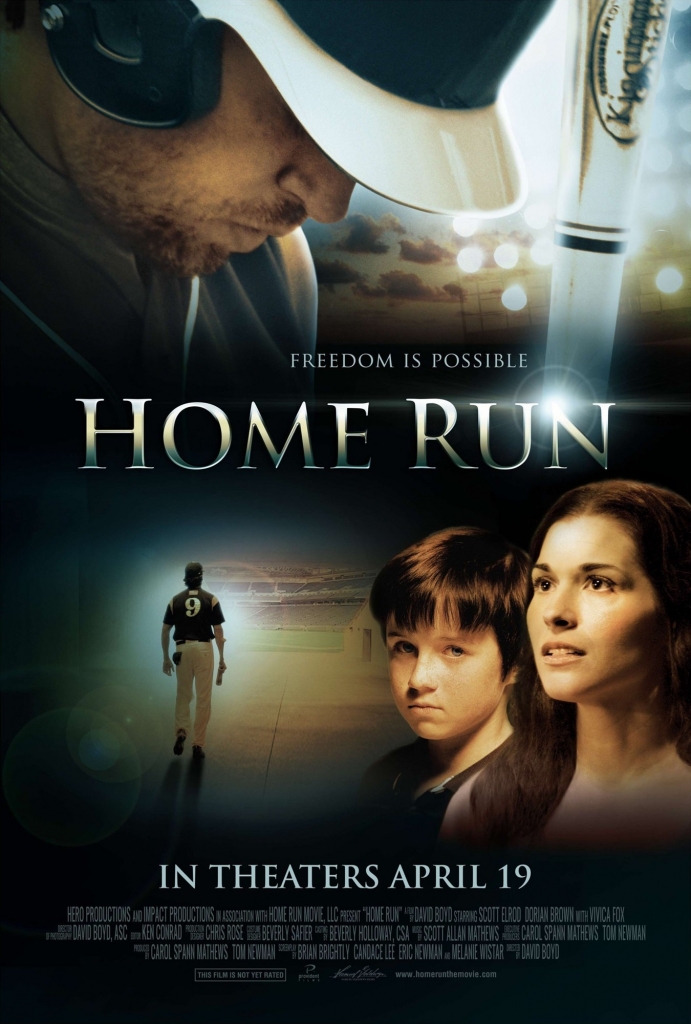 Carol and Micah are wonderful people and I instantly connected with both. They were still in the process of editing the film, so I wouldn’t be able to watch it. Carol spoke about the heart and soul of the film and also explained how the recovery program Celebrate Recovery was a prominent part of the film. I told them I had only written one novelization before, but I had many ideas and simply wanted to serve their interests and produce the sort of novel they would love to see. Right away Carol gave me full license to do whatever I’d like with the novelization.
Carol and Micah are wonderful people and I instantly connected with both. They were still in the process of editing the film, so I wouldn’t be able to watch it. Carol spoke about the heart and soul of the film and also explained how the recovery program Celebrate Recovery was a prominent part of the film. I told them I had only written one novelization before, but I had many ideas and simply wanted to serve their interests and produce the sort of novel they would love to see. Right away Carol gave me full license to do whatever I’d like with the novelization.
“Feel free to think outside the box,” Carol encouraged me. “You can even write the story from the point of view of the baseball player’s mother.”
I had already read the screenplay—the publisher sent it to me—so I knew what Carol’s suggestion meant.
“Well, that’s definitely thinking outside the box,” I said. “But since the mom is dead, perhaps that’s a bit too much for the Christian market.”
This was affirming because it told me they really trusted me with the novelization. But as I told them back then, and as I tell every filmmaker I’ve worked with since, this was their movie and their story. My job was to make sure I put the heart and soul of their work into the novel.
So I began work on this novelization. The entire Home Run experience was incredible. I really did get spoiled in many ways. I became part of the filmmakers team, and really was accepted as if I was family. The same went for the leadership of Celebrate Recovery. They got to know me and treated me like family too. That led to me eventually writing Mac and Mary Owen’s beautiful memoir Never Let Go.
THE PROCESS
So for a novelization, you simply take the screenplay and just add some description and details to the story, right? For some of the novelizations I’ve read out there, especially for the blockbuster films, that’s exactly what the writer did. It always depends on how much of a leash he or she might have. In the case of Home Run, I was able to approach it in whatever way I wanted.
The first key thing I need to discover when writing a novelization is to hear about the expectations from the filmmakers and the publisher. I want to know the core of the story and what it means to them. I have usually worked with the film’s producers, but I’ve occasionally only worked through an agent or through the publisher.
Before I even start to write, I read through the screenplay several times making notes as I go along. I have never seen a film before writing a novelization, and I prefer that. I will find out who the actors are so I can imagine them, but I love to picture scenes and dialogue and action in my own head.
The first big choice is what point of view I will write the novel in. For Home Run, it was primarily about Cory Brand, the baseball player. I thought about having the novelization written from a few POVs, but ultimately I decided it might work best only in the baseball player’s perspective.
The story and the structure of the screenplay were already in place, so I couldn’t mess around with that. But I did figure out a creative way to include the backstory in the novelization. I chose to weave short, poetic chapters through the regular chapters telling the story. The regular chapters were written from a third-person past tense point-of-view limited only to Cory, while the short bits (or interludes as I call them) were third-person present tense. The past verses present tense might simply sound technical, but it really doesn’t impact the tone and style.
Writing the novelization (and any novelization) consisted of having the printed screenplay on my desk and using it as my sole reference point. Almost all the time, I will use the exact dialogue in the screenplay. I will follow the structure of the screenplay as much as I can while also trying to do different things. With a novelization, you’re basically adding on to an already existing story. This has to feel natural, however. It can’t be forced. That’s one of the many tricky parts about working on a novelization.
The present-tense interludes I wove throughout Home Run were all about Cory Brand’s history of alcoholism. It wasn’t like he just woke up and found himself like that. While a few things were shown or hinted at in the movie, I was able to expand these. Yet I didn’t want to simply dump a bunch of backstory onto the readers. So these short little bits served as a creative way to get to know Cory more while also adding to the overall story.
Just like with any project I’m working on, I would get new ideas all throughout the day. The very first opening line of the Home Run novelization came to mind in the middle of the night. Honestly. I woke up and had this line in my head.
“These pieces of you, imperfectly sewn and patched all over, blur by like a blinding pitch . . . “
I emailed myself that at 2:59 a.m., and it was word-for-word except I added “patched all over like a coat of many colors.” My editor thankfully took out the coat bit.
I shared an opening chapter with the producers and publisher, then would share a few more, then eventually finished it and handed it in. There were more people commenting on the novel, but at the same time this was great because it only made the story better.
When I eventually saw the film for the first time, I was able to see subtle differences not only between the screenplay and the novel but also between the screenplay and the film. A director is an artist himself, so he will end up making a variety of changes in the story. The thing that always strikes me is how short the scenes are in a film verses a novel. Obviously movies have to be extremely tight to fit into two hours or less. So a scene in a novel can feel one way and then blast by when I watch it in a movie.
When it was all said and done, Home Run was one of my favorite collaborations I’ve ever worked on. I have a poster of the film hanging in my office, a gift from the producer at the film’s premiere.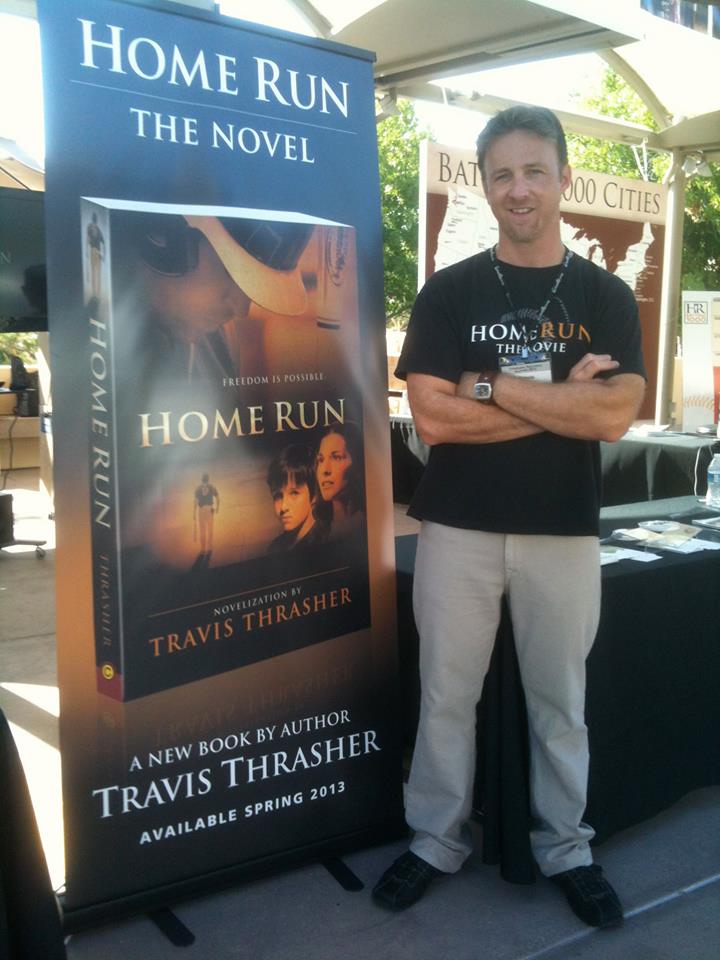 SUBSEQUENT PROJECTS
SUBSEQUENT PROJECTS
Since Home Run, I’ve written four more novelizations. One for the end-times supernatural thriller, The Remaining. Another for the film Do You Believe? And most recently for the film releasing tomorrow, God’s Not Dead 2. There was another ghostwritten novelization I wrote in one month (another one of those “interesting” projects that come along).
With each novelization I do, I learn something about the process of writing them along with learning about screenplays and making films and also collaborating in general. They can be difficult in their own way. Max Alan Collins said something to this effect in the Vanity Fair article mentioned above:
“It’s always amusing to me, you take a book, say, To Kill a Mockingbird, throw away three quarters of it and win an Academy Award for best adapted screenplay,” says Foster. “But if you take a screenplay and add three quarters of original material to it––which is a much, much more difficult piece of writing––well, that’s by definition ‘hackwork.’ And it’s much harder, having done both, to take a screenplay and make a book out of it than [to] take a terrific book and make a screenplay out of it.”
One of the most difficult things with writing a novelization is figuring out whose point-of-view to use. With The Remaining and even more so with Do You Believe?, those films were basically stories about groups of people. It’s easy to do this in film but in a book you can’t have ten different point-of-views. So how can you condense and only show one or at least a few POVs while keeping the heart and soul of the film? For Do You Believe? and all its weaving storylines of strangers connecting, the task was quite difficult. Especially when you have a short timeline. But that’s what made it exciting to work on.
GOD’S NOT DEAD 2
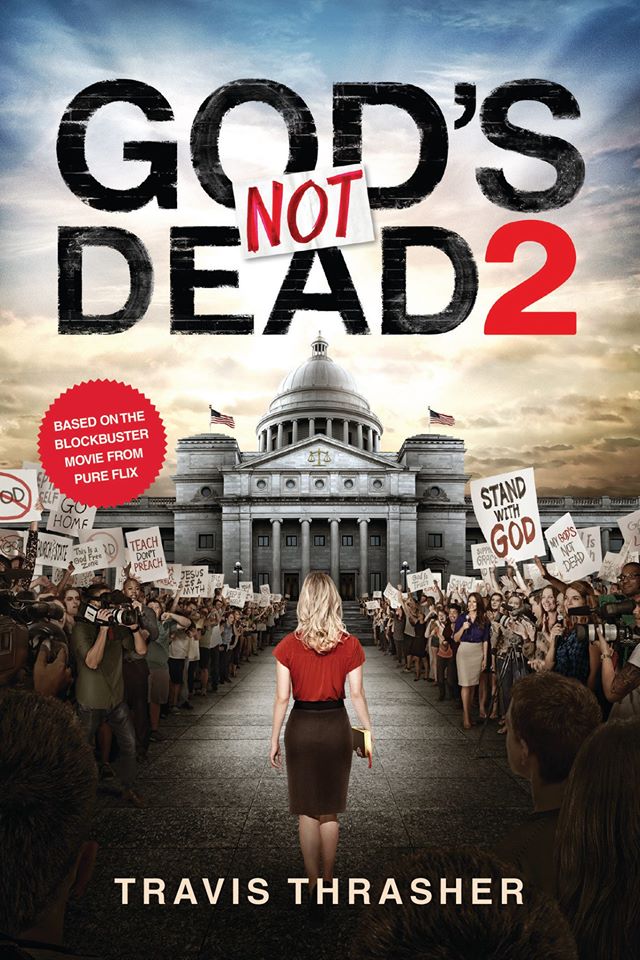 That brings me to the sequel to God’s Not Dead, the phenomena that grossed over $60 million in the theaters. For any movie other than a blockbuster, that’s great. But for a Christian film, that almost seems miraculous.
That brings me to the sequel to God’s Not Dead, the phenomena that grossed over $60 million in the theaters. For any movie other than a blockbuster, that’s great. But for a Christian film, that almost seems miraculous.
The filmmakers behind Do You Believe? were also the makers of God’s Not Dead. So while writing the former, I kept asking if there was a sequel in the works. Thankfully there would be one and I was excited when approached by Tyndale House Publishers to work on it.
There wasn’t a novelization done for the first God’s Not Dead, so there was a discussion about doing a book for each. But it was eventually decided to focus on the new film but to weave some of the storylines from the first film in the new book.
A big choice—perhaps one of the biggest choices I’ve made when writing a novelization—was selecting two characters to basically narrate God’s Not Dead 2. The most obvious would have been the teacher at the center of the story, Grace Wesley. She is forced to defend herself in a courtroom after mentioning Jesus Christ in her classroom. But instead of going with her character, I chose to have two other people tell the story.
The first person is a reporter named Amy Ryan, a character in the first film as well. She’s a minor character in both, but I was intrigued by her character because in the first film she finds faith. Yet in this one, she’s actually struggling with it. Imagine that—a Christian film showing a believer wrestling and having doubts! I wanted to explore that.
The other main point-of-view in the novelization for God’s Not Dead 2 is the lawyer defending the teacher. He is Tom Endler, and the very first time he shows up he admits to not having any faith. So I felt like that would be a fabulous character to journey alongside.
Picking a nonbeliever and a struggling believer might not seem to be the obvious choices for narrating God’s Not Dead 2. But that’s exactly why I wanted to go with them. They both have journeys where they change. They also had a lot of room for filling in their stories, so that’s exactly what I did.
I really can’t wait for those seeing and loving the film to then read the book. It is the exact same story, but it’s simply told from different point-of-views. My goal with this isn’t to show someone how creative or talented I might be. The goal was to come alongside the film and offer a unique way to point back at the story. To compliment the film. To frame the theme in a slightly different way. To maybe even make people go back and see the movie again!
LOOKING AHEAD AND DREAMING
I will always be learning and growing at this writing thing. Whether I’m working with someone famous to help tell their story or working on my own novels, I continue to figure out new and interesting ways to shape a tale. I hope that novelizations will remain one way I keep doing this.
Would I love to work on a Star Wars book? Absolutely. And I’d be thrilled to work on a novelization for a director like Christopher Nolan. Or to do some big action flick and inject it with some humanity and authenticity. I also want to continue to be able to work on faith-based films. There just might so happen to be a God’s Not Dead 3. I’m already asking the filmmakers about it (but haven’t heard anything!).
I think novelizations will be around to stay as long as there are still movies to pull them from. It’s a fun and always fascinating process. One that’s put me on a red carpet and gotten me to sit next to Vivica Fox during a premiere. One that’s put me on the set of a film and also connected me with various movie people I’d otherwise never be in contact with.
Check out God’s Not Dead 2 in theaters. I have a feeling it’s going to do pretty well just like the first one! Then compare the movie with the novel and see how good of a job I did.
